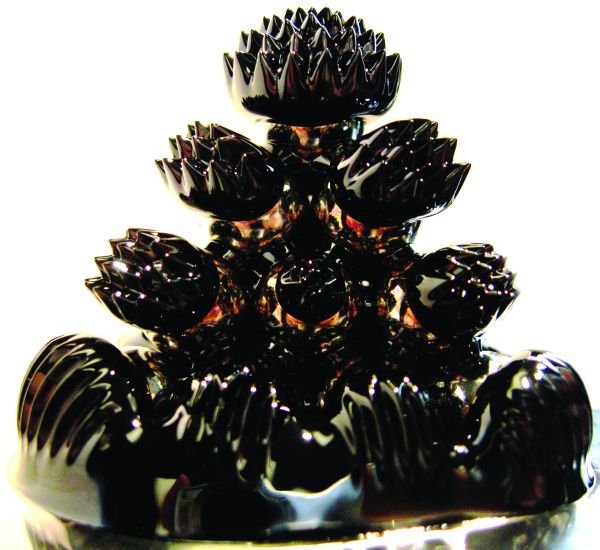Magnetic Tree
 |
This photograph demonstrates the interaction of ferrofluid with a magnetized set of stainless steel balls arranged in the shape of a tetrahedron. A ferrofluid is formed of three main components: magnetic nano-particles such as magnetite, a surfactant (commonly oleic acid), and non-polar medium to act as a solvent to the magnetite-surfactant complex. The spikes observed on each ball are the result of several complex interactions between the magnetic forces along the line of the magnetic field, the London dispersion forces between the non-polar tails of the oleic acid surfactant, and gravity. London dispersion forces exist between the non-polar tails of the surfactant causing the magnetite-surfactant complexes to be attracted to one another. As the ferrofluid “climbs” the lines of the magnetic field, the magnetic force decreases in magnitude while the London dispersion forces remain constant. This phenomenon is the result of the magnetic force being inversely proportional to the square of the distance from the source to the charged particle, in this case, a magnetic particle. The tip of the spike is the point at which the equilibrium between these two forces is reached.
Maurice Pasternak and Lucas Marcelli
St. Elizabeth Catholic High School, Thornhill, ON
First Prize ( High School Class Category )
Questions or comments regarding these pages may be sent to
cap@uottawa.ca